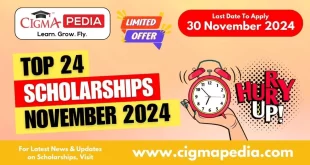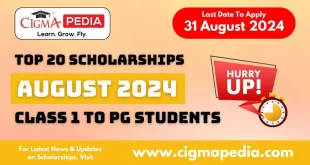ITI in Mechanic Motor Vehicle
Mechanic (Motor Vehicle) is a motor vehicle mechanical vocational trade. The duration of trade is two years with four semesters of six months each. In this trade students are taught about skills like servicing, repairing and major overhauling of motor vehicle like Scooter/ Motor Cycle, Cars, Trucks and Buses; maintain all types of vehicles by work of suspensions, transmission, brakes, steering work, basic electrical and electronic work; fault diagnosis in petrol/diesel engines including MPFI engine, engine fitted with turbocharger, engine scanning, car A/C system and different relay operations. Trade is very good from job point of view as it opens many career fields for them at various places.
Skills Required
- Students should possess skills like knowledge of motor vehicle technology; strong practical skills and good problem-solving skills to find faults.
- They should also possess the ability to work quickly and pay attention to detail; good communication and customer service skills; the ability to follow written and spoken instructions.
- Candidates also possess a reasonable level of fitness; an up-to-date knowledge of vehicle developments, especially new engine types and electronics.
Syllabus
1st Sem
- Familiarisation with institute, Job opportunities in the automobile sector, Machinery used in Trade. Types of work done by the students in the shop floor.
- Practical related to Safety and Health, Importance of maintenance and cleanliness of Workshop.
- Practice using all marking aids, like steel rule with spring calipers, dividers, scriber, punches, Chisel etc.,
- Measuring practice on Cam height, Camshaft Journal dia, crankshaft journal dia, Valve stem dia, piston diameter, and piston pin dia with outside Micrometers.
- Practice on General cleaning, checking and use of nut, bolts, & studs etc.,
- Practice on Marking and Drilling clear and Blind Holes, Sharpening of Twist Drills Safety precautions to be observed while using a drilling machine.
- Practice on making Rectangular Tray. Pipe bending, Fitting nipples unions in pipes. Soldering and Brazing of Pipes.
- Practice in joining wires using soldering Iron, Construction of simple electrical circuits, Measuring of current, voltage and resistance using digital multimeter, practice continuity test for fuses, jumper wires, fusible links, circuit breakers.
- Diagnose series, parallel, series parallel circuits using Ohm’s law, Check electrical circuit with a test lamp, perform voltage drop test in circuits using multimeter, measure current flow using multimeter /ammeter, use of service manual wiring diagram for troubleshooting.
- Cleaning and topping up of a lead Acid battery, Testing battery with hydrometer, Connecting battery to a charger for battery charging, Inspecting & testing a battery after charging, Measure and Diagnose the cause(s) of excessive Key-off battery drain (parasitic draw) and do corrective action.
- Identify and test power and signal connectors for continuity, Identify and test different type of Diodes, NPN & PNP Transistors for its functionality.
- Practice to make straight beads and Butt, Lap & T joints Manual Metal Arc Welding.
- Practice on Liquid penetrates testing method and Magnetic particle testing method.
- Identification of different type of Vehicle. Demonstration of vehicle specification data; Identification of vehicle information Number (VIN).
2nd Sem
- Identification of parts in a diesel engine of LMV/ HMV Practice on starting and stopping of diesel engines.
- Overhauling of cylinder head assembly, Use of service manual for clearance and other parameters, Practice on removing rocker arm assembly manifolds.
- Overhauling of crankshaft, Use of service manual for clearance and other parameters.
- Checking of flywheel and mounting flanges, spigot, bearing. Check vibration damper for defects, Practice on removing cam shaft from engine block, Check for bend & twist of camshaft.
- Cleaning and Checking of cylinder blocks Surface for any crack, flatness, Measure cylinder bore for taper & ovality, clean oil gallery passage and oil pipeline, Bore.
- Reassemble all parts of engine in correct Sequence and torque all bolts and nuts as per workshop manual of the engine.
- Practice on Checking &Top up coolant, Draining and refilling coolant, Checking / replacing a coolant hose, Testing cooling system pressure, Practice on Removing & replacing radiator/ thermostat.
- Practice on Dismantling air compressor and exhauster and cleaning all parts – measuring wear in the cylinder, reassembling all parts and fitting them in the engine.
- Practice on removing & Cleaning fuel tanks, checking leaks in the fuel lines, soldering & repairing pipe lines and Unions, brazing nipples to high pressure line studying the fuel feed system in diesel engines, draining of water separators.
- Practice on Start engine adjust idling speed and damping device in pneumatic governor and venture control unit checking Performance of engine with off load adjusting timings.
- Monitoring emissions procedures by use of Engine gas analyser or Diesel smoke meter.
- Practice on removing alternator from vehicle dismantling, cleaning checking for defects, assembling and testing for motoring action of alternator & fitting to vehicles.
- Practice on troubleshooting in LMV/HMV for Engine Not starting –Mechanical & Electrical causes, High fuel consumption, Engine overheating, Low Power Generation, Excessive oil consumption, Low/High Engine Oil Pressure, Engine Noise.
3rd Sem
- Identification of different major components of Heavy vehicle and their function & placement study of different make lorry/bus/tractor in Institute with different dealers or organizations.
- Practice on adjusting clutch pedal play removing gearbox and clutch assembly from Light & Heavy Vehicle. Dismantling clutch assembly, cleaning inspecting parts.
- Practice on Removing open type propeller shaft from vehicle, Practice on removing universal joints, cleaning replacing worn out parts, re-assembling & refitting to vehicle.
- Identification of Automatic transmission components Checking automatic transmission fluid, Changing transmission fluid & filter.
- Following practical to be Practiced On Light & Heavy Vehicle. Practice on removing the drop arm, Check and adjust the turning angle, align the drop arm and steering wheel with the front wheel.
- Following practical to be Practiced On Light & Heavy Vehicle Practice on visual Inspection of chassis frame for crack, bent and twists.
- Practice on removing wheels from light & Heavy vehicle, dismantling tyres and tubes checking puncture.
- Practice on Adjusting brake pedal play, Overhauling and inspection of tandem master cylinder assembly, Overhauling and inspection of front and rear brake assembly, overhauling and inspection of wheel cylinder assembly.
- Trouble shooting Practice with Heavy vehicle for Engine Not starting – Mechanical & Electrical causes, High fuel consumption, Engine overheating, Low Power Generation, Excessive oil consumption, Low/High Engine Oil Pressure, Engine Noise.
4th Sem
- Identification of petrol Engine components. Practice on starting and stopping of petrol engines. Observe and report the reading of Tachometer, Odometer, temp and Fuel gauge under ideal and on load condition.
- Simple repairs in fuel feed system – overhauling of fuel pump, carburetors, fuel Filters and air cleaners. Repair to a car carburetors – adjusting float level and slow speed adjustments.
- Practice on Cleaning fuel tank, checking for leaks in Fuel tank. Identification of various components of MPFI system. Testing of MPFI components and replacement if necessary. Check delivery from fuel Pump. Replacing a fuel filter.
- Identification of Electronic control Unit. Set up for testing, Testing of Electronic Control Circuit.
- Diagnosis- Possible causes and remedy for Engine cranks, but will not or hard to start, Poor fuel economy or engine performance.
- Checking a charging system for the cause of undercharge, No charge, and over charge conditions. Removing & replacing an alternator, Inspection of rotor for ground, open circuit – field coil resistance, slip ring surface, Fan, bearing.
- Removing starter motor from vehicle, and Performance test for pull-in test, Hold-in test, pinion (plunger) return test, No-load performance test.
- Trace the light circuit – test bulbs, align head lamps, Aiming headlights. Changing a headlight bulb, Checking of a head light switch and to replace if faulty.
- Identification of Air conditioning components, Performance test on A/c unit, Checking Charged state of refrigerant, Inspecting & adjusting an engine drive belt, Replacing an engine drive belt.
- Trouble shooting and remedy for Horn- No horn operation, poor sound quality, horn sounds continuously and to replace the horn if faulty.
- Driving Practice. Practice in straight driving on wide roads. Driving through lanes and curves. Practice in reversing. Practice overtaking another vehicle. Practice in driving through sand and wet surfaces. Practice in parking and Diagonal parking.
- Project Work.
Eligibility & Admissions
- Passed 10th class examination under 10+2 system of education with Science as one of the subject or its equivalent.
- Performa for admission may be obtained from the respective State Directorate dealing with Craftsmen Training Scheme or from the Principals of the concerned Industrial Training Institutes/ centers conducting training programme under Craftsmen Training Scheme.
Job Prospects
- Over the five years to November 2018, the number of job openings for Motor Mechanics is expected to be above average (between 25,001 and 50,000). Job openings can arise from employment growth and people leaving the occupation. Further information about job openings and projected employment growth is available on the Help page.
- Employment for this occupation fell slightly in the past five years and in the long-term (ten years). Looking forward, employment for Motor Mechanics to November 2018 is expected to remain relatively steady.
- This is a very large occupation (92,200 in November 2013) suggesting that opportunities should be available in most regions.
- Motor Mechanics have a very high proportion of full-time jobs (94.8 per cent). For Motor Mechanics working full-time, average weekly hours are 41.7 (compared to 41.1 for all occupations) and earnings are below average – in the fourth decile. Unemployment for Motor Mechanics is below average.
- The most common level of educational attainment is Certificate III/IV (65.1 per cent).
- Motor Mechanics are mainly employed in Other Services, Retail Trade and Manufacturing.
Employers
Can be work as a Mechanic in reputed workshop/Service Centre, Technician in various Automobile Manufacturers, Automobile Auxiliary units and Government Transport corporations.Work as a Driver.There is a lot of demand for machinist in major industries like Ashok Leyland, TVS Motor Co., Carborundum Universal and also various small-scale industries at different industrial estates.
Self Employment Opportunities
- Starting own workshop/Service Station.
- Tyre, Tube repair shop.
- Electrical and Battery repair shop.
 Courses and Colleges after 10th After 10th, What Next?
Courses and Colleges after 10th After 10th, What Next?








